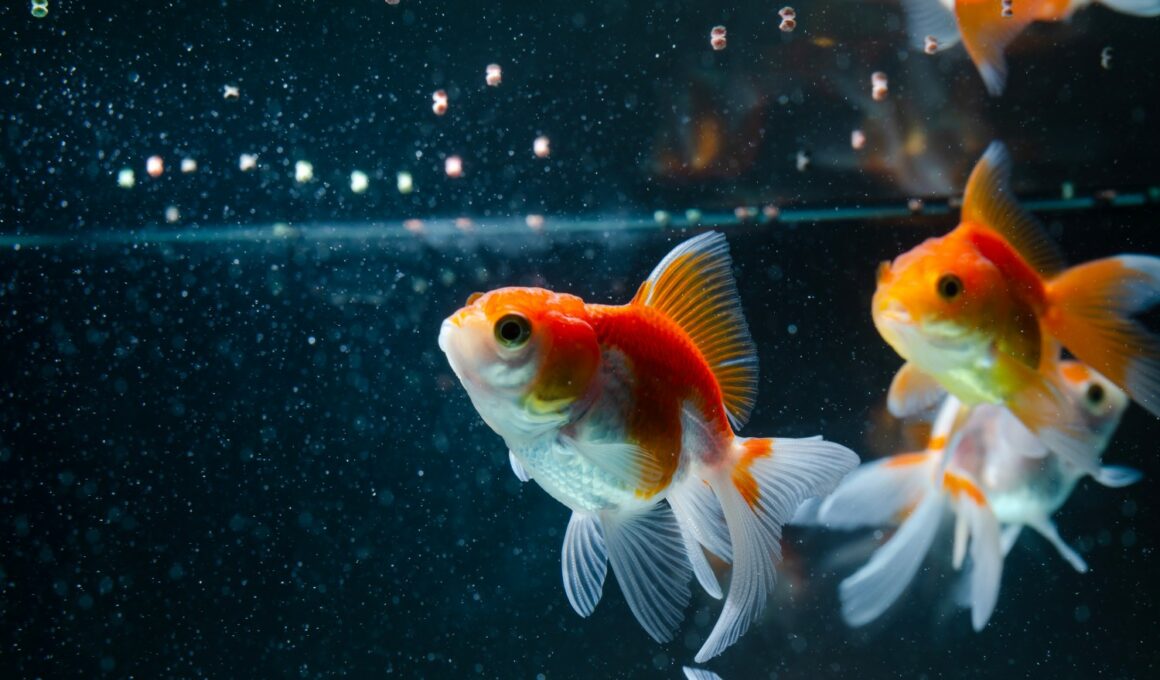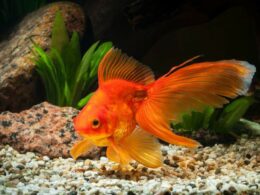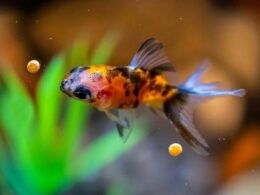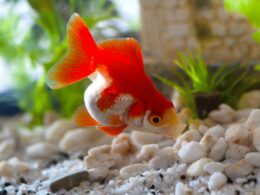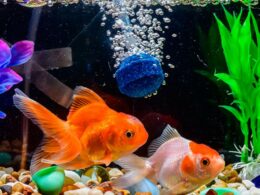In this article Show
Over the years, my adventures in fish-keeping have led me down numerous winding paths. From understanding the subtle quirks of a Betta’s personality to setting up the perfect environment for a school of neon tetras, the learning never seems to end.
One of the most intriguing questions I’ve encountered recently, and I’m sure some of you might have pondered the same, is this: Can goldfish eat turtle food? Now, before diving into the heart of the matter, it’s essential to appreciate the unique world of our friends.
Goldfish, a household favorite and perhaps one of the first pets many of us ever had, have dietary preferences that differ vastly from their counterparts in the wild. And then there’s the lesser-known turtle fish, which, despite its name, isn’t a turtle at all.
Confused? Don’t be. We’re about to dive deep (pun intended) into this topic and shed light on whether or not it’s a good idea for these two to share a meal. Buckle up, as we explore the dietary intricacies of our beloved goldfish and unravel the mystery behind the elusive turtle fish.
Quick answer: Yes, goldfish can eat turtle food in moderation as an occasional treat. However, these exotic fish should not be fed turtle food as their primary diet. While both goldfish and turtles are popular aquatic pets, they have distinct nutritional needs shaped by their unique biology and habitats.
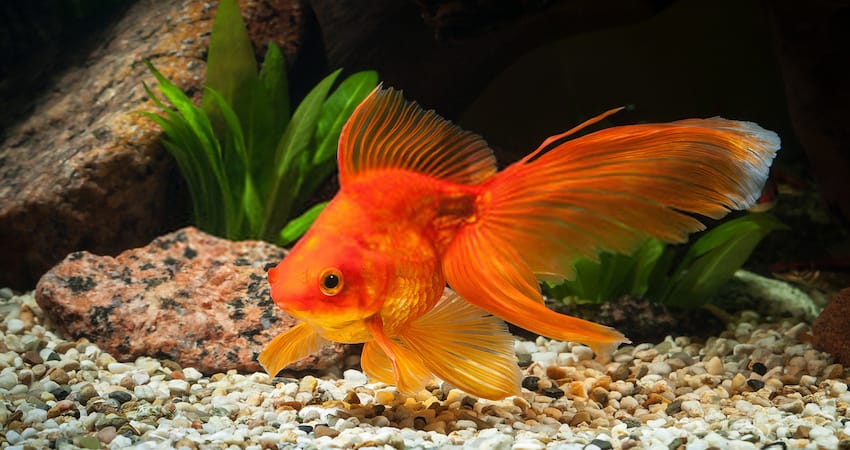
What Do Goldfish Naturally Eat?
Goldfish are undeniably one of the most recognized fish species worldwide. But beyond their graceful dance in our home aquariums, have you ever paused to wonder about their natural dietary preferences?
In the wild, goldfish are opportunistic feeders. This means they’ll munch on pretty much whatever they come across. Here’s a glimpse into their wild dietary habits:
1. Insects and Larvae
These form a significant part of a wild goldfish’s diet. They scavenge for small insects and larvae floating on or just below the water’s surface.
2. Plants and Algae
Vegetation is another critical aspect of their diet. Goldfish will graze on soft aquatic plants, roots, and algae. This is also why, in captivity, it’s not uncommon for them to nibble on live plants in an aquarium!
3. Small Crustaceans
Tiny aquatic creatures like daphnia and small shrimp can become a delectable treat for goldfish when they encounter them.
4. Worms
Various types of aquatic worms present in the mud or silt of freshwater bodies serve as another protein source.
In a home setting, goldfish are often fed commercially available flake or pellet food. These are specially formulated to provide a balanced diet, ensuring they get the right mix of protein, vitamins, and minerals.
However, occasional treats like bloodworms, brine shrimp, or fresh veggies (like peas) can be introduced, mimicking some aspects of their natural diet. Understanding this natural dietary preference is crucial.
What Is Turtle Food?
Turtles, with their slow-paced movements and sturdy shells, are fascinating creatures that have won the hearts of many pet enthusiasts worldwide. Given their diverse habitats and species variations, their dietary needs can range widely.
Let’s explore the broad world of turtle foods and understand what keeps these reptiles healthy and content:
1. Commercial Pellets
These are specially formulated foods for turtles, providing a balanced diet. They contain essential proteins, minerals, and vitamins. Depending on the turtle’s species, you’d choose between aquatic turtle pellets or tortoise food.
2. Live Prey
Many turtle species are carnivorous, especially when young. They might feed on small fish (like goldfish, guppies, and minnows), worms, snails, and even insects like crickets.
3. Vegetables and Greens
Especially as they mature, many turtle species shift towards a more herbivorous diet. Leafy greens (like romaine lettuce, dandelion leaves, and collard greens) and vegetables (like zucchini, carrots, and bell peppers) can be provided. Always ensure they’re pesticide-free and thoroughly washed.
4. Fruits
While not a primary food source, fruits can be an occasional treat. Options include melon, strawberries, apples, and bananas. Remember, fruits should be given sparingly due to their sugar content.
5. Natural Prey
If you have an outdoor pond or a suitable environment, turtles might find and eat local insects, aquatic plants, or small creatures on their own, adding to their natural diet.
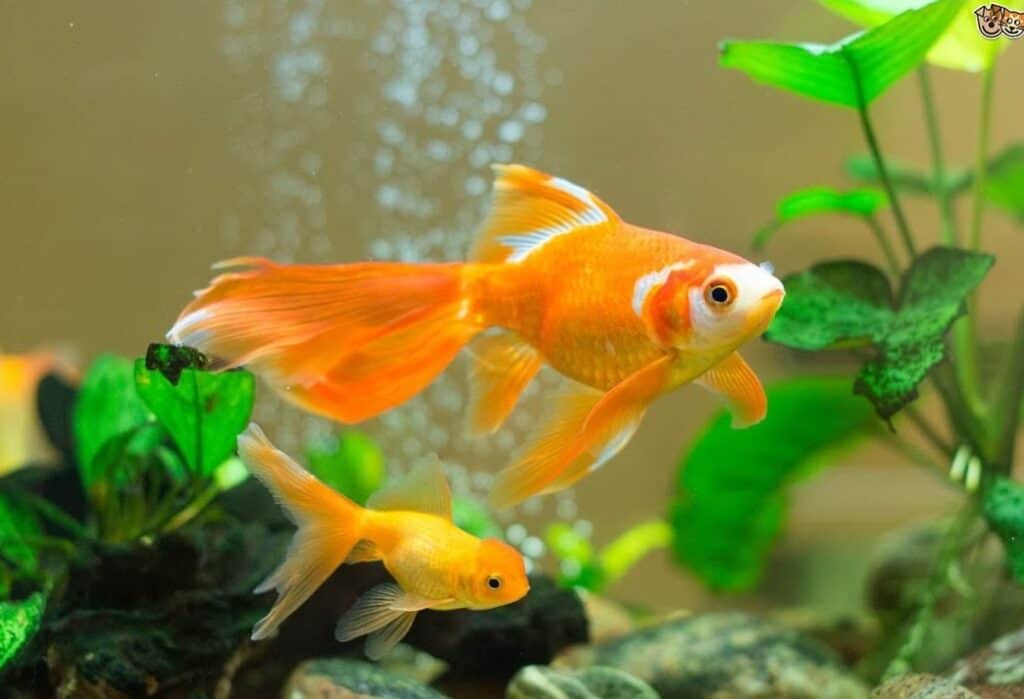
Is Turtle Food Safe For Goldfish To Eat?
No, turtle food is not ideal for goldfish to consume as a primary source of nutrition. While both turtles and goldfish are cherished aquatic pets, their dietary requirements are distinct due to their unique biology and natural habitats.
Turtle food is crafted to cater to the specific needs of turtles, which can differ considerably from the balanced blend of proteins, carbohydrates, and essential vitamins that goldfish require.
Feeding goldfish turtle food consistently can lead to various complications. Their different digestive tracts mean that goldfish might struggle to process food meant for turtles, potentially leading to issues like constipation or bloating.
Furthermore, an excess of protein, commonly found in many turtle foods, can be detrimental to a goldfish’s health if consumed regularly.
While the occasional intake of turtle food might not cause immediate harm, it’s not a suitable or safe regular diet for goldfish. It’s always best to provide each species with food specially formulated for their needs to ensure optimal health and longevity.
Potential Problems with Feeding Goldfish Turtle Food
While goldfish and turtles are both popular aquatic pets, their dietary needs are distinct and shaped by evolution, habitat, and biology. It is typical to consider offering your goldfish turtle food if you also have a turtle as a pet.
However, when we think of feeding goldfish food intended for turtles, several concerns arise. Here are the potential issues you might encounter:
1. Nutritional Imbalance
Turtle food is formulated with specific nutrients tailored to meet a turtle’s requirements. Goldfish, being primarily omnivores, have different nutritional needs. A diet predominantly made up of turtle food could deprive goldfish of essential nutrients.
2. Digestive Concerns
Turtles and goldfish have different digestive systems and processes. Foods designed for turtles might be harder for goldfish to digest, potentially leading to constipation or other gastrointestinal problems.
3. Floating Problems
Some turtle pellets float, which might encourage goldfish to gulp air as they feed from the surface. This can increase the risk of buoyancy issues or swim bladder disorders.
4. Lack of Essential Components
Goldfish require specific vitamins, amino acids, and fatty acids for optimum health. Turtle food might not provide these in the right amounts or proportions.
5. Over-protein Issues
While younger turtles are more carnivorous and their food may have higher protein levels, goldfish, especially fancy varieties, can face problems if their diet is too high in protein. This can lead to kidney problems and other health concerns.
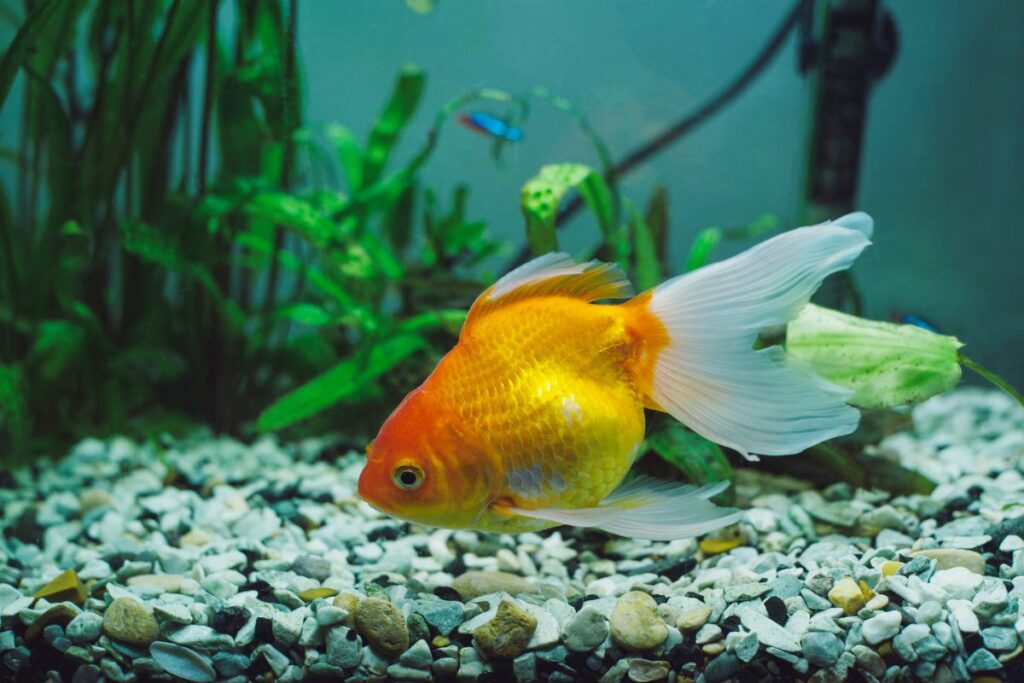
6. Risk of Filler Ingredients
Some commercial turtle foods might contain fillers or components not suitable for goldfish. Regularly consuming such ingredients could lead to long-term health issues for the fish.
7. Expense and Wastage
On a practical note, high-quality turtle food can be pricey. Using it as a primary food for goldfish could be uneconomical, especially if it doesn’t benefit the fish’s health.
Uneaten turtle food, if left in the goldfish tank, could deteriorate and impact the water quality. This can increase the levels of ammonia and other harmful substances.
Safe Alternatives for Goldfish Diet
Ensuring our goldfish receive a well-balanced and nutritious diet is paramount for their health and vitality. Thankfully, there’s an array of safe and beneficial food options to consider. Let’s dive into some trusted alternatives:
1. High-quality Pellets or Flakes
These are formulated specifically for goldfish and provide a balanced mix of nutrients. When choosing pellets or flakes, always opt for reputable brands that use high-quality ingredients. Remember, pellets come in various sizes, so choose one that matches the size of your goldfish.
2. Frozen Foods
These are excellent sources of protein and can be found in most pet stores. Options include bloodworms, brine shrimp, and daphnia. Always ensure you thaw frozen foods thoroughly before feeding.
3. Fresh Vegetables
Goldfish are omnivores and benefit from a diet that includes plant matter. Offer them boiled and deshelled peas, blanched spinach, or small bits of lettuce. These can aid digestion and provide essential nutrients.
4. Live Foods
While there’s always a risk with live foods, some options like brine shrimp and earthworms can be introduced safely if sourced from reputable suppliers. Live foods can be enriching for goldfish, simulating their natural hunting instincts.
5. Gel Foods
These are becoming increasingly popular. They’re nutritionally dense and are often formulated with wholesome ingredients like fish meal, spirulina, and vegetables. Gel foods are especially useful for fancy goldfish varieties prone to buoyancy issues.
Regardless of the food type, maintaining a consistent feeding schedule is vital. Overfeeding can lead to numerous problems, from water quality issues to obesity in goldfish. Typically, feeding them once or twice a day with an amount they can consume in 2-3 minutes is a good rule of thumb.
Wrapping Up
Navigating the world of fish-keeping is both a rewarding and educational journey. This blog post delved into the dietary needs of goldfish, explored the enigma of turtle food, and observed the intricacies of goldfish behavior, one thing stands clear: our finned friends deserve informed and compassionate care.
Whether it’s deciding on their diet or simply watching them glide gracefully in their aquatic homes, let’s commit to ensuring their well-being at every turn. After all, in understanding and caring for them, we not only enrich their lives but ours as well.






